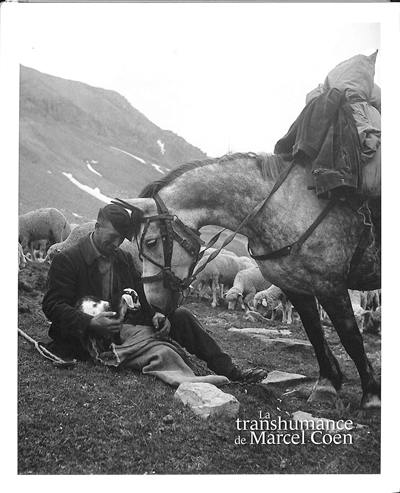
Fiche technique
Format : Relié
Nb de pages : 191 pages
Poids : 940 g
Dimensions : 21cm X 26cm
ISBN : 978-2-36980-113-9
EAN : 9782369801139
La transhumance de Marcel Cohen
une manière d'habiter le monde
Quatrième de couverture
La transhumance de Marcel Coen
En 1951, après cinq ans de captivité en Allemagne, Marcel Coen, un jeune photographe épris de liberté, décide de suivre une transhumance, de la plaine de Crau aux alpages du Mercantour : « J'étais heureux parmi ces gens simples menant leurs bêtes à la montagne ; la marche lente, la musique de toutes les cloches et clochettes vous fait baigner dans un monde irréel et vous coupe littéralement de l'existence. » C'est, avec la sensation d'assister au spectacle millénaire d'hommes et d'animaux profondément unis aux espaces qu'ils traversent, ce qu'il exprime dans ses photos. Enrichi de son propre journal de route et de réflexions sur ce que ses photos signifient aujourd'hui, cet ouvrage paraît tandis que l'Unesco classe la transhumance au patrimoine culturel immatériel de l'humanité.
The transhumance of Marcel Coen
After five years of captivity in Germany during World War II, Marcel Coen embraced the freedom that he found in photography. His passion led him to follow a transhumance that took a herd of sheep from the Crau plains to the high mountain pastures of the Mercantour area of the Alps : « I was happy among these simple people leading their animals into the mountains ; the slow walk, the music of all the bells on the collars, it submerges you in a dreamlike world and literally cuts you off from existence. » This is the sensation that he so masterfully expresses in his photographs, along with the feeling of bearing witness to the age-old spectacle of people and animals that are profoundly in unison with the spaces they traverse. Enriched with his own travel journal and reflections on what his photographs represent today, this book is being published at a time when UNESCO is classifying transhumance as part of humanity's intangible cultural heritage.





